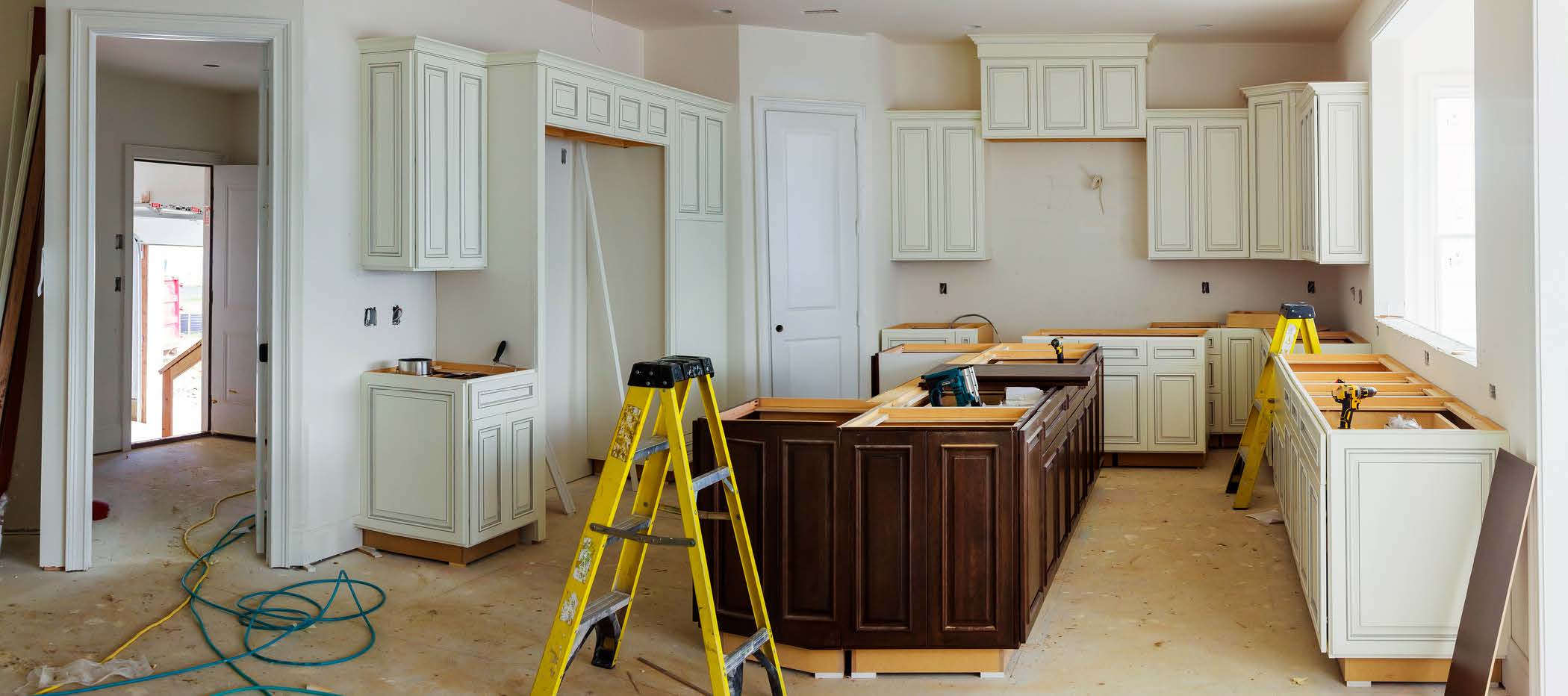Introduction
Renovating your home can enhance its value and functionality, but it also introduces new risks during the construction process. Whether you are adding a new room, replacing windows, or upgrading major systems, your current homeowners insurance policy may not fully protect your investment unless it is updated. Before the first hammer swings, it is essential to review your insurance needs, increase your coverage if necessary, and confirm that everyone working on your property is properly insured.
Notify your insurance agent about your remodeling plans
Contact your insurance agent before construction begins in order to increase your coverage to reflect the new changes in your home. He or she can help you determine how much additional property coverage you’ll need and can also help you obtain extended liability or other insurance. Keep your agent informed about the progress of the remodeling in case your plans change and a different level of coverage is needed.
Increase the amount of your coverage
Although some homeowners policies are comprehensive enough to cover most home additions and improvements, other policies make it necessary for you to increase your coverage amount. Remember that your home’s value will increase with the improvements, so you’ll soon have more to protect. Don’t make the mistake of waiting until the remodeling is completed to increase the amount of your homeowners insurance coverage. You should do this before the work starts. If you don’t, and the improvement is damaged or destroyed before it’s completed, you’ll probably have to pay for the loss out of your own pocket–turning your remodeling plan into a very expensive job. Of course, when you purchase more insurance, your premiums will increase.
What your homeowners insurance should cover
If you’re adding a new room or other structure to your house, you would be wise to specifically name the new addition as a covered item on your homeowners policy. Otherwise, if the new structure is damaged, the insurance company might not cover your loss. However, a new roof or modern stormproof windows do not necessarily need to be named as covered items in your policy. In most cases, these improvements will increase the overall value of your house, and you should simply increase your total coverage amount to reflect your home’s greater value. Talk to your agent for details. Keep in mind that you may also need to buy increased coverage for any new furniture or other personal property you purchase.
While your remodeling is being done, you also need to consider protection for the building supplies that your contractor uses to complete the job. If supplies such as carpeting, tiles, or lumber are stolen, your homeowners insurance or the contractor’s business insurance should cover the theft. The time to find out, though, is before a supplier starts delivering these items to your house.
Make sure your contractor is properly insured
When you hire a contractor to work on your house, you run the risk of a lawsuit if the contractor or an employee gets injured on the job. You need to protect yourself from this potential liability by verifying that the contractor carries adequate workers’ compensation coverage. Ask to see proof; have the contractor’s insurance agent mail or fax you a copy directly. The contractor should be able to present an active certificate of coverage. Make sure the certificate’s active dates reflect the current period. You would be wise to call your contractor’s insurance carrier for confirmation.
Your contractor should also have a certificate for contractor’s liability coverage. This type of insurance covers any damage the contractor does to your property unrelated to the renovation. In addition, find out if the contractor’s policy covers uninstalled finished products, such as chandeliers or ceiling fans. If not, consider adding such coverage to your homeowners policy.
Don’t forget subcontractors
If you are having major remodeling done to your house, such as the addition of a new room, your general contractor may delegate some of the work to subcontractors. For instance, he or she may bring in an electrician, plumber, painter, or other specialist to handle a particular area of the job. In this case, examine each subcontractor’s certificate of coverage for workers’ compensation insurance yourself. Do this even though the general contractor will generally take responsibility for confirming such coverage. You may want to call the insurance carriers for verification. If the amount of coverage is inadequate, contact your agent about extending the limits of the liability portion of your homeowners policy. This is also the case if you plan to act as the general contractor yourself. Subcontractors are separate workers and need to be covered separately.
What if your family or friends help with the work?
Suppose you’re doing most of the renovation yourself, with a little help from a relative or close friend; no one is being paid. You still need to make sure your helper is adequately protected in the event of injury. Generally, the liability coverage of your homeowners insurance will pay the medical bills, just as it would for any other guest at your home. Under some circumstances, though, your helper’s health insurance might pick up a portion of the medical costs before your homeowners policy kicks in. If you have any questions about coverage, ask your insurance agent.
Finally, it is important to obtain proper inspections to make sure that the addition/renovations meet local code. Without this, a loss might not be covered. For example, if an electrical fire started in the uninspected room that you added on, you may have a problem.
Conclusion
Remodeling your home is a major project and protecting it properly should be part of your planning. From adjusting your homeowners insurance coverage to verifying that contractors and subcontractors carry the right policies, taking these steps helps reduce the risk of unexpected costs. Do not wait until the renovation is complete to evaluate your insurance needs—update your coverage before work begins, and keep your insurance agent informed throughout the process. Careful planning today ensures that your improvements are protected tomorrow.
Scarlet Oak Financial Services can be reached at 800.871.1219 or contact us here. Click here to sign up for our weekly newsletter with the latest economic news.
Source:
Broadridge Investor Communication Solutions, Inc. prepared this material for use by Scarlet Oak Financial Services.
Broadridge Investor Communication Solutions, Inc. does not provide investment, tax, legal, or retirement advice or recommendations. The information presented here is not specific to any individual’s personal circumstances. To the extent that this material concerns tax matters, it is not intended or written to be used, and cannot be used, by a taxpayer for the purpose of avoiding penalties that may be imposed by law. Each taxpayer should seek independent advice from a tax professional based on individual circumstances. Scarlet Oak Financial Services provide these materials for general information and educational purposes based upon publicly available information from sources believed to be reliable — we cannot assure the accuracy or completeness of these materials. The information in these materials may change at any time and without notice.



